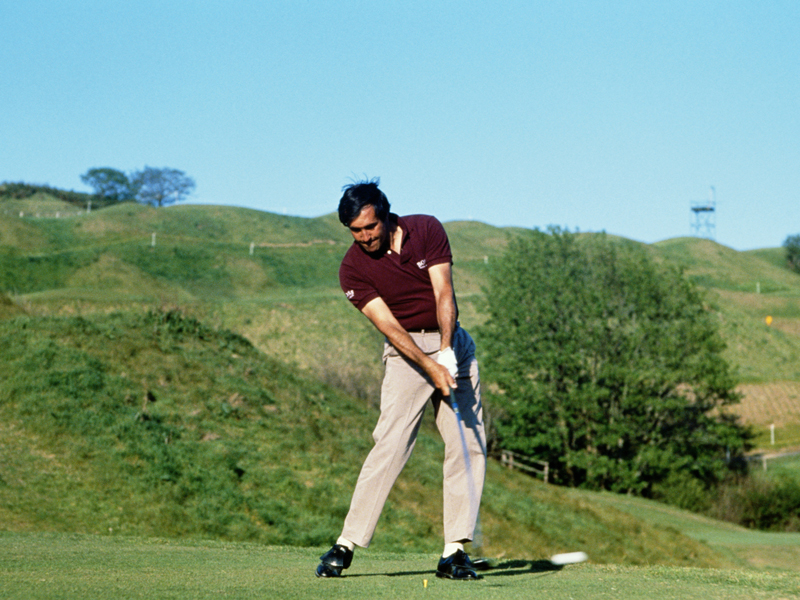Fergus Bisset: A sense of place
The importance of focusing on what you can control rather than what you can't


After watching top amateur players at the LAAC, Fergus has realised he needs to focus on what he can control rather than stressing about what he can’t.
Fergus Bisset: A sense of place
Out in Mexico last week, watching some fabulous players in the sixth Latin America Amateur Championship (LAAC), I decided to try and figure out what they’re doing that I’m not.
Obviously, they were hitting it 310 yards, reaching monster par-5s in two and holing putts.
But they were also going through the same process on every shot, no matter what was in front of them and that is something I (and many other amateurs) don’t do.
Their focus was important in windy conditions in Mayakoba, also because of the fact that many of the tee shots and approaches were extremely daunting with trouble lurking on both sides.
I spoke to one of the coaches while walking the course and commented on how narrow the fairways were and how tough it was to keep the ball on the short grass.
Get the Golf Monthly Newsletter
Subscribe to the Golf Monthly newsletter to stay up to date with all the latest tour news, equipment news, reviews, head-to-heads and buyer’s guides from our team of experienced experts.
“As long as the player goes through the correct routine and makes a solid swing, it doesn’t matter what’s in front,” he said. “Pick a target and then focus on what you can control – what you do at the ball is what’s important.”
That made a lot of sense to me and I was very aware that it’s something I’m bad at doing.
When I’m on a difficult hole, all I can think about is what’s up ahead – where the bunkers are, the out-of-bounds on the right, the woods on the left.
But there’s absolutely nothing I can do about those things; all I can control is what happens at the ball.
I know I can hit a good shot, I’ve done it plenty of times, so that’s what I have to concentrate on doing.
Often, with a difficult shot in prospect my thought process goes; “Find the fairway, keep it straight, please, somehow, just go straight!”
Whereas it should be – “Pick a target, got it, correct stance, good grip, smooth takeaway, swing through.”
With the former, the chances of making anything other than a nervous and tight pass at the ball are slim.
With the latter, the chances are that a good process will produce a good result.
I was determined to put this tactic into practice when I headed to Fraserburgh on Wednesday for this week’s North East Alliance meeting.
I was going to stay at the ball rather than where I wanted it to go on every shot, from drive to putt.
My mantra would be, “All I can control is what I do here.” – Do it well and the results will be good.
It worked almost every time I managed to capture that mindset – Finding a sense of place and thinking only on what I could affect was highly effective.
Unfortunately, over the course of four and a bit hours, there were a few occasions when my thoughts wandered and I forgot my plan.
On the 12th tee for instance, where I always lose a ball to the right, my mind drifted when standing over the ball.
It shifted 230 yards, from the ball to the knee-high rough on the right-hand side and, unsurprisingly, that is where my ball ended up – lost.
Actually, although I scored poorly overall, I was reasonably happy walking off the course as, when employed correctly, the strategy of staying at the ball worked.
If I can retain a sense of place all the way round next time, I might just crack it.
Try it next time you're out playing.

Fergus is Golf Monthly's resident expert on the history of the game and has written extensively on that subject. He has also worked with Golf Monthly to produce a podcast series. Called 18 Majors: The Golf History Show it offers new and in-depth perspectives on some of the most important moments in golf's long history. You can find all the details about it here.
He is a golf obsessive and 1-handicapper. Growing up in the North East of Scotland, golf runs through his veins and his passion for the sport was bolstered during his time at St Andrews university studying history. He went on to earn a post graduate diploma from the London School of Journalism. Fergus has worked for Golf Monthly since 2004 and has written two books on the game; "Great Golf Debates" together with Jezz Ellwood of Golf Monthly and the history section of "The Ultimate Golf Book" together with Neil Tappin , also of Golf Monthly.
Fergus once shanked a ball from just over Granny Clark's Wynd on the 18th of the Old Course that struck the St Andrews Golf Club and rebounded into the Valley of Sin, from where he saved par. Who says there's no golfing god?
-
 Volvo China Open 2025 Picks, Odds And Predictions
Volvo China Open 2025 Picks, Odds And PredictionsFollowing a break for The Masters, the DP World Tour returns for the final two weeks of its Asian Swing and the Volvo China Open is the penultimate event
By Jonny Leighfield
-
 Rory McIlroy's Sports Psychologist Explains Why He 'Didn't Talk' To Bryson DeChambeau In Masters Final Round
Rory McIlroy's Sports Psychologist Explains Why He 'Didn't Talk' To Bryson DeChambeau In Masters Final RoundDeChambeau raised eyebrows at Augusta National when claiming that McIlroy wouldn't engage in conversation during the final round of The Masters
By Jonny Leighfield